General Shock Tuning Theory
Shock valving influences ride and handling, but these two things are often at odds with each other. Large amounts of low speed rebound will give you great cornering control but may cause the suspension to be harsh and may prevent the suspension from drooping out in the whoops. Because of this, it is best to run sway bars and tune the shocks for ride quality.
When selecting where to tune, be sure it represents the type of terrain you will encounter the most. Short travel can go surprisingly fast if you tune it stiff, but it’ll beat you up on the little stuff. On the flip side long travel suspensions can be plush and float over everything but it can be too soft leading to poor handling. Make sure you tune for the conditions you plan to see.
Shock tuning can be extremely rewarding, with a little work you can achieve tremendous improvements in ride comfort and performance. The guide below is good for Fox, King, and Sway-A-Way coilover, bypass, and smoothie shocks with some tips thrown in for air bumps.
Get Started Tuning
Warning: Be careful! You will be driving a vehicle with untuned suspension which may behave in unpredictable and uncontrollable ways.
Start by selecting proper coilover springs and setting ride height as described in our article about how to measure and set spring preload.
Back off all dual rate nuts so they don’t contact at any point.
Set tire pressure to the amount you intend to run off-road, this has a large impact on harshness.
Set air bump pressure to 1/6 of the corner sprung weight.
Eg: 600 lb corner sprung eight = 100 psi of nitrogen
It is better to start too soft than too stiff, so if you’re creating a baseline tune, start soft.
Start with small whoops and slowly run through them, increase the size of the whoops and your speed as your comfort level increases. You need to get the suspension moving if you want to tune it so find a set of whoops that makes the suspension move without taking you out of your comfort zone. Taking video is extremely helpful in determining what is happening because many factors can influence performance. Putting zip ties on the piston rods is a great way to track how much travel is being used (don’t do this if your shocks bottom out as it may damage the seals).
Which Damping Changes to Make
The goal is to have the chassis stay level through the whoops, and to use all of your suspension travel on the roughest terrain you plan to encounter.
The rebound action should let the axle droop with the chassis staying level between whoops.
Compression should gently lift the chassis as the tires encounter the next whoop.
If the chassis is getting tugged into the whoops, or falls quickly on a drop off, you have too much high speed rebound.
If the chassis gently rises too much through the whoops or drop off you have too little high speed rebound.
If the chassis harshly rises through the whoops you have too much high speed compression.
If the chassis dives into a whoop or bottoms out prematurely you have too little high speed compression.
If your compression and rebound are approximately close through the whoops, but the suspension is harsh on small chop, then decrease low speed damping starting with compression.
As the valving gets closer, gas pressure in the air bumps may be increased, but do it separately from a valving change to be sure they don’t cause harshness or bucking.
Once you are good on the whoops, lower the dual rate stops down, they will help raise the chassis through the whoops. Set the stops so the front dual rate slider hits after 2” of up travel (1 to 1.5″ on the coilover), and set the rear so it hits after 4” of up travel (2-3″ on the coilover). Adjust the stops up and down as necessary to get a level ride through the whoops. The dual rate stops will help with chassis control. If you still want more chassis control increase low speed rebound and be prepared to decrease high speed rebound.
Now for the last stage, check how the vehicle responds to bottoming by jumping and bottoming out. The vehicle should rise back past ride height before settling back again. The chassis should rise quickly and evenly. This motion is a result of mid speed damping, but there isn’t a single adjustment for that so adjust either high or low speed damping to change the response.
Which Valving Changes to Make
Take your time re-valving, make sure everything is clean, and document all of your changes. It is recommended to only change one of the four things at a time: compression/rebound, front/rear. Start with soft compression and dial in the rebound including bleed. Then move back to increasing compression damping.
Rebound
Through bleed has a major impact on the entire rebound curve so you will want to tune rebound first then leave the bleed alone until you’re doing fine tuning.
On heavy rebound tunes:
- Low speed and high speed are affected by bleed.
- Low speed is not affected by disks unless you run a flutter stack.
On light rebound tunes:
- Only low speed is affected by bleed, and with diminishing returns as bleed is increased.
- Valve disks impact low speed damping.
Compression
Because bleed is so influential on rebound and much less influential on compression it is not recommended to use bleed to tune compression. Therefore compression is entirely controlled by disks:
- Disk get exponentially stiffer with thickness (a 0.015″ thick disk is more than twice as stiff at a 0.008″ thick disk).
- The two largest diameter disks have the greatest impact on all damping.
- The smallest diameter disks impact all damping but can be used to target high speed compression.
Bypass Special Notes
Bypass shocks work by adding directionally controlled free bleed between the inlet and outlet of each tube. If your tubes are all the way closed, especially on compression, you are likely to experience harshness. Although bypass shocks are externally adjustable and have a huge range of adjustment it is still very common to revalve them. It is important to control how much force comes from the disk and how much comes from the bleed.
Valving Guides
Regardless of which brand you have, Fox has a great valving guide for disk thicknesses.
FOX 2.0 Shock Valving Specifications
FOX 2.5 Shock Valving Specifications
FOX 3.0 Shock Valving Specifications
Comment on this article or ask for more like it here.





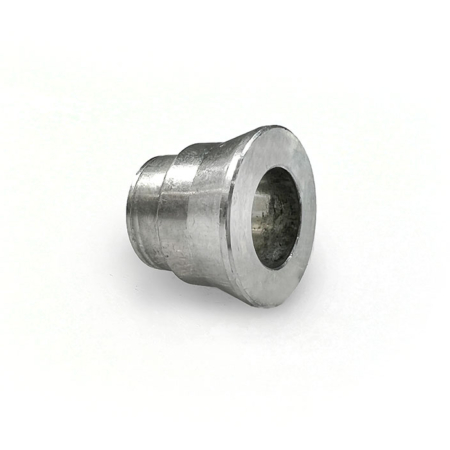
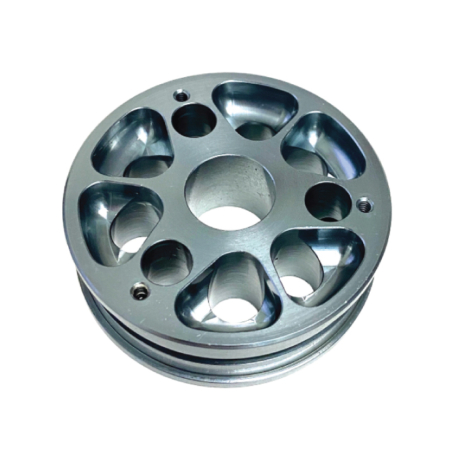

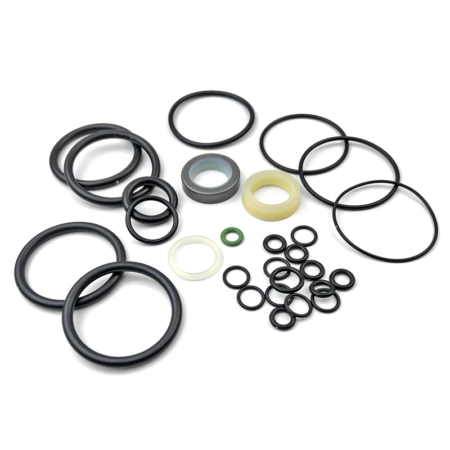





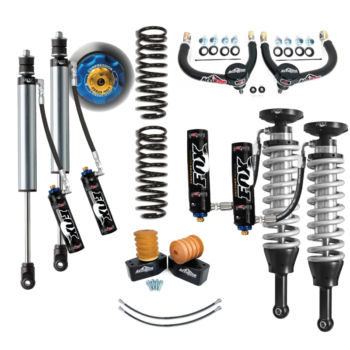

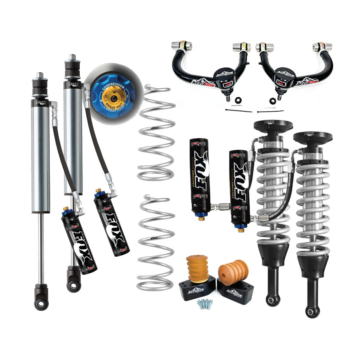


Hi.. regarding the pressure.. do i need higher pressure with heavier valving.. or does it not matter?? Since your article stated the pressure is set based on the weight of the car in that corner.. and will the pressure change affect the low speed or high speed compression damping?? And does it affect the rebound characteristic of the damper also??
The air pressure mentioned in this article is referring to the air bumps, not the shocks/coilovers. Fox Shocks/Coilovers should be set to 200psi and King should be at 150psi.
How do you read the fox 2.5 tune, what do the #30, #35,#40 ect…. correlate to. I understand the shim thickness, just not getting what those # numbers are there for.
Those numbers refer to the outside diameter of the valve. See here for more: https://accutuneoffroad.com/wp-content/uploads/2015/07/FOX-2.0-Shock-Valving-Specifications.pdf
I have a 2003 extreme performance II 2 seat vw turbo rail weighs about 1500#. I have king 2.5 Coilovers,fronts 12 inch stroke piggy back, rear 16 inch stroke remote res Front spring 150# both up and low, rear springs #250/#150. The car is uncontrollable in whoops, rear bucks bad unless I’m absolutely hammered down on the throttle and then it’s still scary. I ordered .008/.010 valve shims from king, haven’t installed them yet, I have no clue what valving is currently in them. In the short choppy stuff slow speed it damn near bursts my kidneys, at speed it kinda bounces off the tops. I have maybe 1- 1/2” preload in the front and almost zero rear. I need some advice on how to get this thing under control. I’m trying to follow the above setup guide but it doesn’t seem to do much when I lower secondary rings anywhere. Please help.
Unfortunately we simply cannot recommend valving that is needed in your shocks to make it perform, thats what we specialize in as a business. If you would like us to custom valve them, we are happy to do so. Please give our sales team a call to get the process started (424) 377-0808. Thanks
Thanks so much for advice! I enjoy reading and learning from your posts!